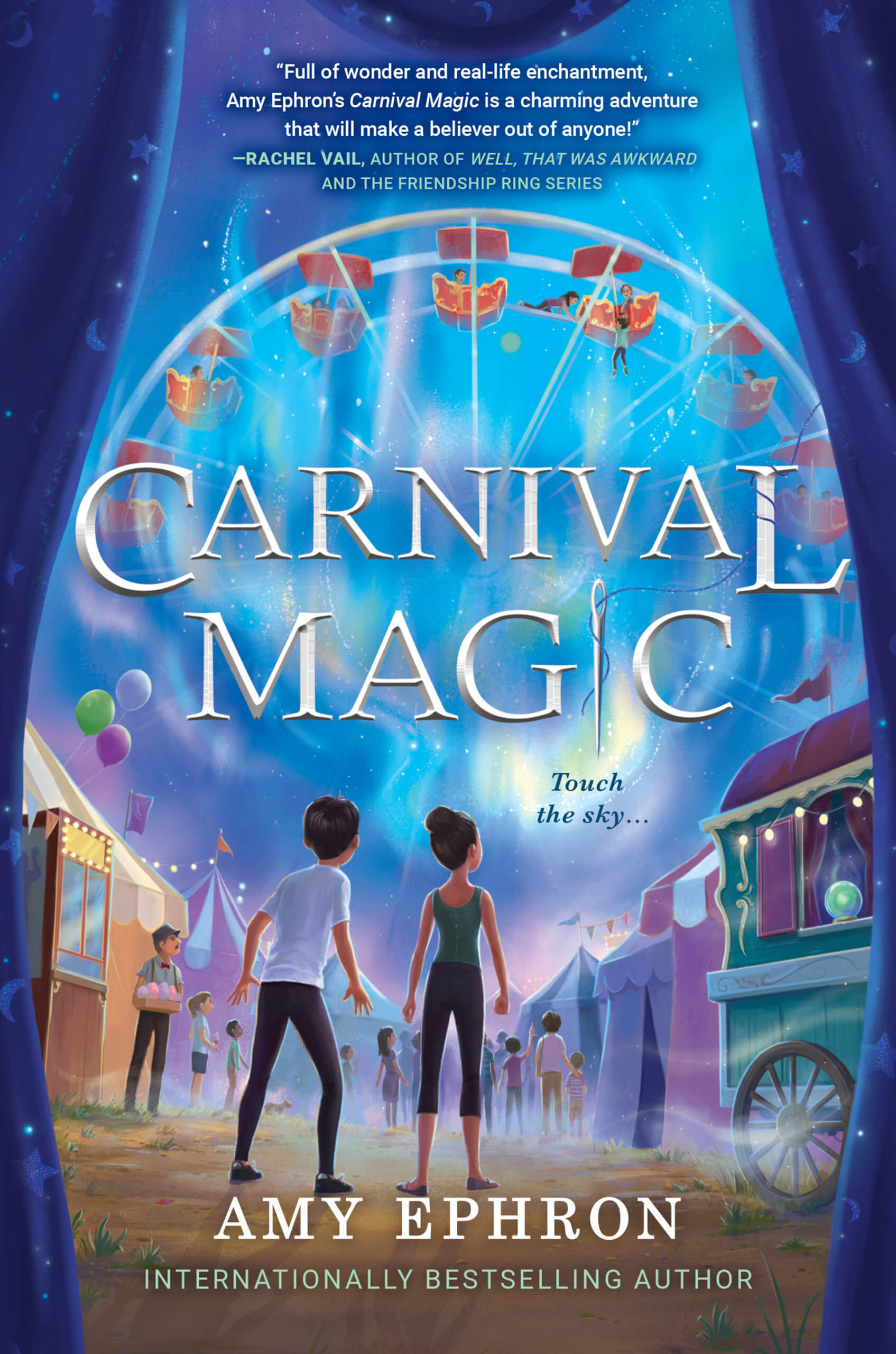Ephron Brings Fairy Tale Magic To Harbor


If you’re jonesing for a fantastical adventure — or perhaps just a nice spot of tea — then head to Harbor Books in Sag Harbor on Saturday, July 21, between 3 and 5 PM for an enchanted tea party to celebrate the publication of Amy Ephron’s latest children’s novel, Carnival Magic. This marks Ephron’s second book for young readers and serves as a standalone companion to her acclaimed The Castle in the Mist.
The Castle in the Mist introduced readers to the clever, creative, and captivating young heroine Tess, a real “leap before you look” gal, who, while on a seemingly dull holiday with her overly-logical little brother Max to visit their recently widowed Aunt Evie in England, stumbled upon a castle in the mist, a special key, a mysterious new friend, an ominous warning, and a marvelous journey.
Now, a full year later, Tess and Max are going back to England for a brand-new adventure; when a carnival comes to Aunt Evie’s town, the precocious siblings could never have dreamt of the wild ride in store for them in Carnival Magic.
Ephron, an avid fantasy reader from an early age, has always believed in the magic of books.
“I think Oz is real,” she said matter-of-factly. “I really think somewhere, if I could only find it, it probably exists.”
Naturally a hefty dose of magic exists within the plot of Carnival Magic, but Ephron couldn’t help but notice sprinklings of possible fairy dust in the creation of it as well. For instance, two of the new characters in Carnival Magic are a pair of twin aerial ballet artists; after writing them in, she went to see her editor Jill Santopolo at Philomel Books/Penguin Publishing only to discover that clear through the office window was a view of an aerial ballet school. It only got eerier from there.
“There’s a scene at the Paignton Zoo in Carnival Magic where I had Tess wander off and find three baby tigers,” Ephron noted. “When I looked up the Paignton Zoo, eight weeks before the date of when this book took place, very rare baby tigers had been born at the zoo. Three of them. There wasn’t any way I could have known that. So there were all kinds of magical things that kept happening.”
“Like also,” she continued, “Tess pulls a needle out from one of the baby tiger’s paws, and weirdly, I found out that the town of Paignton, England was home to the man who invented the sewing machine.”
Ephron is very much looking forward to sharing the magic with readers of all ages and is especially glad to be celebrating the release at Harbor Books, a “magical store” which she makes a point of frequenting whenever she visits the Hamptons.
She has already begun work on her third book in the series, The Other Side of the Wall, which she plans to release in fall of 2019. As with the first two, the stories will steer clear of weapons and violence of any kind, because, as the author put it, “everyone is dealing with enough as it is.”
Although much of her writing career has been catered toward adults (as an international bestselling novelist and contributing editor of Vogue), Ephron’s writing for children has been substantial and impactful. Years before debuting her children’s books, she wrote for “Sesame Street,” “The Electric Company,” and was first writer and executive producer of the Warner Brothers’ film A Little Princess. She’s been writing for as long as she can remember.
“I used to write poetry when I was a very little kid,” Ephron recalled. “I used to write stories. I always wrote. It was my way of dealing with the world. I observed, I wrote. I just always did. Maybe that’s from growing up in a family of writers,” she posited — her sisters are Delia Ephron and the late Nora Ephron — “or maybe it’s from some need to express things that I observe. I don’t know where it came from, but I literally always wrote.”
She offers this advice to young writers: “I always think that the most important thing is to find your own voice — and not necessarily your voice but the voice you want to tell the story in. And there are all kinds of things that build your characters. It isn’t just about their inflection, it’s about their past. It’s about the choices a character might make.
“Even if you don’t write it, you know it — what their clothes look like, what their background is, where they came from, what they like to eat, like ‘Don’t go near me with Brussels sprouts please.’ I think that those are the things that make up character. Then you find how your characters relate to each other.”
Aspiring writers would be hard-pressed to find a better example of this than Tess and Max. Particularly impressive is the relationship between the siblings and their parents, which manifests in the novel as engrained wisdom that come to the minds of the independent duo to help them out of sticky situations.
“They’re usually on their own when they get in trouble,” said Ephron, “So they run tapes in their heads of things that their dad and mom told them. Things like, if you get lost try to get back to where you started, if you can.”
Still, the guiding voices of Tess and Max’s parents come from within, and Ephron hopes that young people will have faith in their own inner truths.
“If somebody tells you that they don’t like something, they may or may not be right,” Ephron encouraged. “I mean, if three people tell you there’s a problem with a paragraph, there probably is something wrong with it, but you have to believe in yourself first.”
In Carnival Magic, before the siblings’ world gets turned upside-down (in more ways than one), Tess gets hypnotized by an ethereal psychic named Tara who tells her to “touch the sky.” Ephron assures her readers that if only they believe in themselves, they can do the same. And therein lies the magic.



